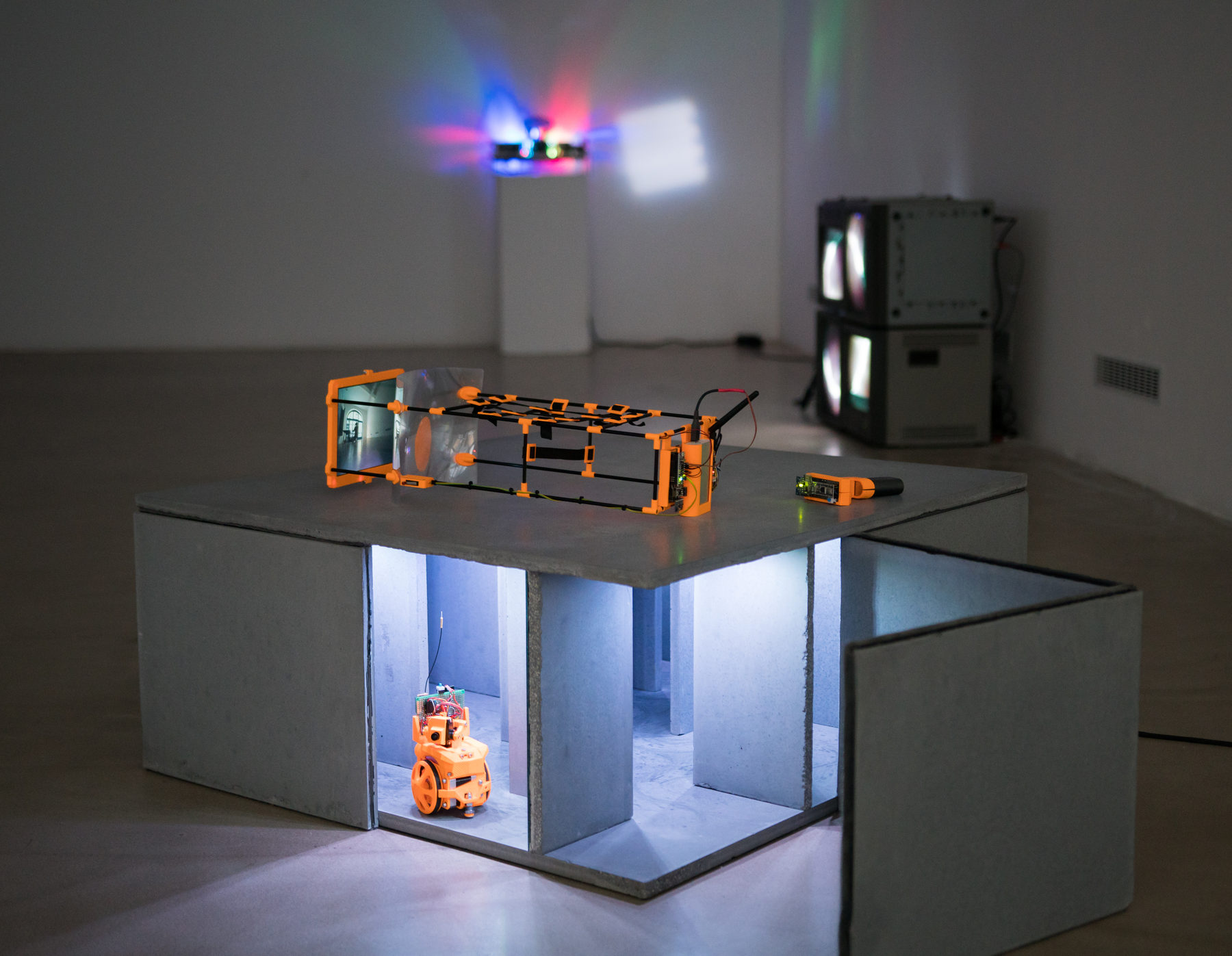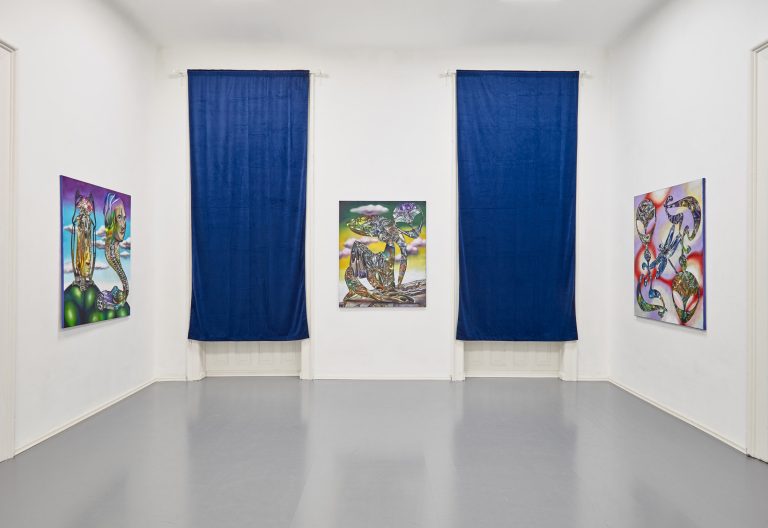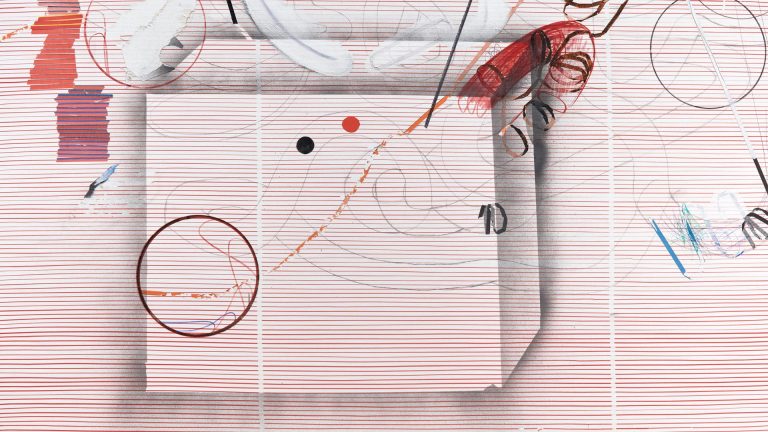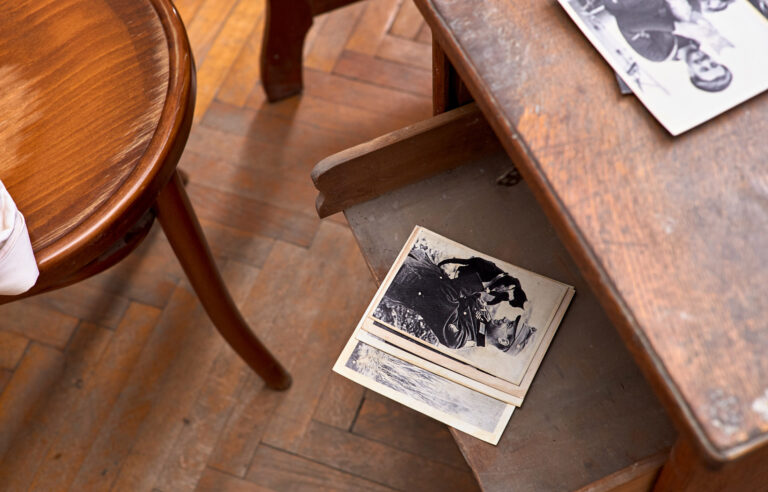Artist: Daniel Cseh
Exhibition title: Appartus
Venue: Horizont Gallery, Budapest, Hungary
Date: June 15 – 28, 2017
Photography: all images copyright and courtesy of the artist and Horizont Gallery
Daniel Cseh’s Apparatus exhibition is part of a project at Horizont Gallery, which is showcasing the freshly graduated students and their works of the Moholy Nagy University of Art and Design.
Dániel Cseh (1982, Budapest, Hungary) graduated in media design from the Moholy Nagy University of Art and Design in 2016. He is member of the Young Photographers Studio since 2013. Cseh has participated in numeorus prestigous exhibitions in Hungary at the Robert Capa Photo Center, the Kunsthalle Budapest or the nonprofit Trafó Gallery. Through his works he uncovers the altering of perception by the technological environment. He uses media archaeology, and a hybrid of low and high-tech components – both new and upcycled – as his medium to highlight the lack of technological awareness in a society on the verge of Singularity. He lives and works in Budapest.
Details of the 5 exhibited works:
Circle
2017, live video installation, 140 x 80 x 40 cm, CCTV camera, screen, water pump
Squaring the circle through Euclidean geometry proved to be impossible, but the trials and errors of mathematicians and experimenters were not in vain. Similar to a hand drawn circle, this ever circulating shape is far from perfect. The illusion is based on the array of live streams of a carefully adjusted waterjet. Though the installation depicts a perfect shape in an imperfect manner, my goal is to construct an image in its purest form, without modification, based on a the waterjet’s trajectory.
Apparatus
2014, installation, 50x40x20cm, negative film, optics, electronics
In 1888, Kodak’s brand new and super simple cameras hit the market, along with their film developing service. “You press the button, we do the rest”, went the advertisement, marking the first time in history when the photographer was not required to actually understand what went on behind the shutter. This trend has endured for more than a century, as today only the engineers of the producing company understand the inner workings of imaging devices. While this is considered normal, the great majority of users have absolutely no idea how the captured light ends up on a remote screen as an image. The price of accessibility and easy operation is the ever-greater separation of man and technology.
Through technological advancement, every medium tends to less and less obstruct visual throughput. In contrast with this visually transparent, and technologically obscure system, my aim was to construct a machine, where the formation of the image becomes transparent. It was built mostly from recycled parts and features an open-source microcontroller unit. The three loops of black and white film carry the image broken down to three colour channels, backlit with the three primary colours of human vision. These images are then fed through a special prism capable of mixing the three channels into a single, colour image to be projected on a flat surface by a set of lenses. The horizontally moving still images are far from a cinematic experience, since the narrow viewing angle, caused by the etched surface of the circular screen, forces the viewer to actively observe.
Resonance
2015, kinetic video installation, 26x32x32cm, cathode ray tube, magnet, electronics
This object, which refers to the infamous collapse of the Tacoma Narrows Bridge, is an examination of how sole aesthetic similarity can develop further interpretation of an otherwise meaningless footage.
To achieve this I invite the viewer to distort the image of the cathode ray tube based on their distance. This manipulation acts as a physical layer between the observer and the video loop.
Black Box
2016, robotic installation, 100x100x40cm, concrete, 3D print, electronics
The Black Box is a robotic installation, a reference to Vilém Flusser’s concept of the technology that intentionally conceals its inner workings. Through a metaphor to this concept, the participant borrows the body and the senses of a strictly non-anthropomorphic robot, and wanders in a maze closed off from the outside world, unaware of their own appearance, capabilities, or scale. This seemingly preserves the increasingly dated assumption, that robots are mere prosthetics, meanwhile, it fulfils the transhumanist ideal of organic and inorganic minds melding. The makeshift symbiosis of flesh and machine becomes complete, when, through its own reflection in a mirror, it emerges as a hybrid being moving in unison with itself. The interaction between digital and sentient happens through devices miming those that are used for exploring VR, but unlike virtual reality, this inner universe of concrete has mass, it occupies space, it is a subset of our physical world.
Demagogy-protector
2015, wearable technology, 20x7x6cm, 3D print, electronics
The middle finger exoskeleton is a response to political bullshit. Powered by a servomotor and Google’s speech recognition capabilities, it helps its wearer react to a predefined set of phrases and sentences by flipping the bird. The 3D printed device is adjustable to the wearer, and so is the vocabulary, which – in the advent of alternative facts and post-factual politics – may never be complete. Overall, it’s an attempt to sensitize the person wearing it, who may already be stuck in indifference to the empty phrases of the post-truth political rhetoric.




















